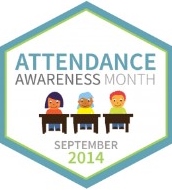by Mike Walsh, Trustee, Butte County Office of Education and CSBA Director-at-large County
I’ve come to appreciate a few accomplishments in my life thus far. Some were planned, such as starting my own company, completing my graduate degree, and learning to play the guitar. Many of them were not planned. They just seemed to have happened. One of the more interesting unplanned events that just sort of happened was an award I received for perfect attendance in high school. I look back on those four years and wonder how in the world did that happen?
I imagine it can be attributed to my early childhood. I was raised by my grandparents who instilled the importance of school from the first day of Kindergarten. Severe asthma and chickenpox were the only times I recall being kept from attending Century Park Elementary School in Inglewood, CA. And that theme was consistent throughout my education from Kindergarten through high school, and beyond.
Good for me and good for the people that influenced me, right? It would be great if it were about me. But it’s not. I believe that my grandparents understood something that not everyone seems to appreciate. Attendance matters. That may not seem like “news” to a board member, but it might be news to some of the families in your district.
A July 2011 report conducted by Applied Survey Research analyzed the longitudinal impact of absences for 640 students that entered kindergarten in 2004 in Santa Clara and San Mateo counties. I should also mention:
- 37{dc2081ac6c5cc81baef6ff3d8b7134abf68618b2dec130d45a21090cbaafa61c} of the students attended schools with low API scores
- 50{dc2081ac6c5cc81baef6ff3d8b7134abf68618b2dec130d45a21090cbaafa61c} were English Language Learners
- 33{dc2081ac6c5cc81baef6ff3d8b7134abf68618b2dec130d45a21090cbaafa61c} came from families earning less than $32,000 annually
The study found that schools with low or middle API scores had worse attendance rates and more issues with chronic absence. Chronic absence is considered missing 10 percent or more of school a year. It’s difficult for me to imagine any of my sons missing 18 or more days a year when they were in school. Regardless of the school’s API ranking (low, middle, or high) scores rise with an increase in attendance. Students with more frequent absences tended to come from families with lower incomes.
Now, before you get the notion that this is about “those kids” or “those families”, let me be clear that this is about “us board members” and our moral obligation to serve those families. They may not understand the relationship between attendance and scores, but we do. Even a small attendance risk (missing 5-9 percent of the school year) made a significant impact on test scores by the 3rd grade. Students with even small attendance risks scored below proficient on English Language Arts tests while those with less than 5 percent of absences scored proficient or above (an overall difference of 27 points between the two groups). In short, as absences in Kindergarten and 1st grade increase, the likelihood of a student performing at grade level decreases.
Attendance matters. If one of the reasons that schools exist is to prepare our children for future careers, that preparation is only as good as their ability to be present. By all accounts this is one issue that should have been addressed in your district’s LCAP. What are your district goals that were set for pupil engagement and school climate? We have a choice to either pay the price to help students succeed or we will continue to pay an ever increasing price for our failure to do so.
 Mike Walsh is a board member in the Butte County Office of Education in Oroville and also serves as the Director-at-Large, County for the California School Boards Association.
Mike Walsh is a board member in the Butte County Office of Education in Oroville and also serves as the Director-at-Large, County for the California School Boards Association.






Be the first to reply